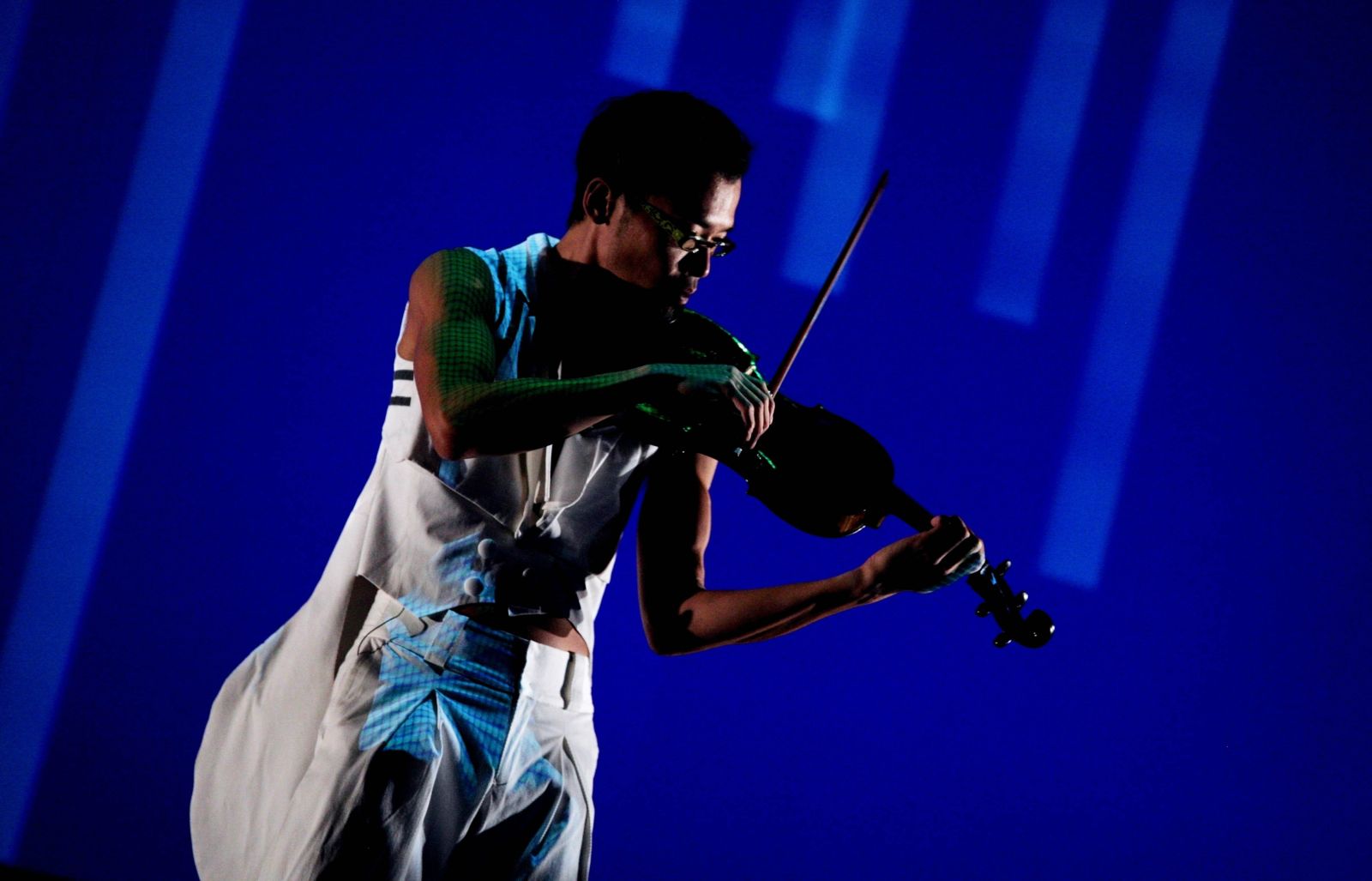Cathie Boyd on Cryptic: ‘Supporting a younger generation of artists is really important’
Cryptic has been a major force on the Scottish creative landscape for 30 years now. As the company marks this major milestone, we talk to founder Cathie Boyd about the importance of remaining curious and continuing to give a leg up to young artists at home and abroad

When Sonica Surge takes over Tramway and The Hidden Gardens in Glasgow for 48 hours this month, an intense feast of sound and vision will be an all-too-fitting way to celebrate the 30th birthday of Cryptic, the company behind this mini-festival. Since it was founded by artistic director Cathie Boyd (while still a student in Glasgow), Cryptic has become an ever-evolving, artistic shape-shifter that has moved from its roots as a leftfield music-theatre company into the delirious melange of sonic art that it is today.

The company’s early focus was on staging literary classics, including Françoise Sagan’s Bonjour Tristesse (1994); Molly Bloom’s rapturous soliloquy from James Joyce’s novel, Ulysses, in Parallel Lines (1996); and Virginia Woolf’s gender-bending novel, Orlando (2010). From the start, Cryptic’s mission has been to ‘ravish the senses’, with internationalism at its heart. This has seen it present more than 2000 artists to over 1.2 million people in 32 countries.
In 2009, the company founded Cryptic Nights, a platform designed to support emerging artists working in sonic art, and was followed in 2012 by Sonica, an annual festival of world-class sonic arts. Throughout, Cryptic has continued to commission major international work. Sonica Surge is a bite-sized compendium, highlighting the likes of Japanese artist Tatsuru Arai’s otherworldly sounds in Re-Solarization, Ahmed El Shaer’s radical re-imagining of 21st-century Islamic art in AI Heaven, and charming robot techno from Moritz Simon Geist’s Hard Times – Rough Sounds!. Also appearing will be Kyiv-based artist George Potopalsky (performing as ujif_notfound) who presents TER.RAIN, a comment on surveillance technology.
Closer to home, Scotland-based audio-visual duo, muto major (aka Nigerian-Scottish sound artist Samm Anga and digital visual artist Veronica Petukhov) present Waxen Figures, which uses sites of historical, spiritual significance in Scotland to explore how the country’s folkloric past interacts with the present.
Sonica Surge opens with the UK premiere of CBM 8032AV, pioneering artist and musician Robert Henke’s fusion of art and engineering. CBM 8032 AV uses five 1980s Commodore computers to reanimate once cutting-edge visuals to create a retro-future construct that brings together analogue and digital in a mind-expanding audio-visual display.

These pieces and the rest of a packed line-up make up the first in a year of special Cryptic events that looks to the future as much as it reflects on the company’s past. ‘I’m absolutely thrilled we’re working with the artists we are at Sonica Surge,’ says a still-irrepressible Boyd over a shaky Zoom call. ‘Rather than deliver an 11-day festival across 11 venues, the idea is we have little bursts of energy in one venue. It’s also about showcasing more Scottish talent than we’ve done before.’
This mix of global and local has been with Cryptic since the very start. ‘That’s because of Glasgow’s City Of Culture year,’ says Boyd. ‘I arrived in Glasgow from Belfast in 1990, originally to study at the Royal Conservatoire Of Scotland, and I didn’t even know what the City Of Culture was. Then I discovered Tramway, and all the international work that came there, like the Maly Theatre of Leningrad and Robert Lepage, and all that just changed my whole vision as a director.’
Boyd recalls that seeing all those works and experiencing those companies from all over the world who were working with a visual language rather than a text-based one was a major factor in encouraging her to create Cryptic. ‘At that time, nobody was making the work I wanted to see. So I decided I wanted to do only one show a year, I wanted it to be with another country, I wanted it to work across art forms, and I wanted it to tour internationally. I was more interested in Europe than I was in London.’

Glasgow’s European outlook was also significant. ‘I feel really, really loyal to Scotland for the support it has given Cryptic over the years. We’ve had lots of different ideas, from deciding we didn’t just want to be a theatre company, but wanted to be a production company, and we were supported with a lot of those ideas, and have been allowed to evolve and try out different things.’
For Boyd, Cryptic Nights remains a crucial part of that evolution. ‘Cryptic Nights was started during the first financial meltdown in 2009,’ she recalls, ‘so to see all these amazing artists like Rachel Maclean and Oliver Coates who we showcased at Cryptic Nights go on to do such great work is really nice. Supporting a younger generation of artists is really important. My big passion now is not just younger artists at home and in Europe, but helping artists from further away places who have less opportunity.’
She cites collaborations with artists from Egypt and South Korea in this respect, with Cryptic set to ravish the senses into the next decade and beyond. ‘I want to stay responsive and see where my travels take me,’ says Boyd. ‘I hope I can discover more artists who we can collaborate with and learn from. We also need to look at where technology is going. Areas of AI are very interesting, and we need to explore how we use that wisely. But where Cryptic goes beyond that, let’s see. The important thing is to stay curious.’
Sonica Surge, Tramway and The Hidden Gardens, Glasgow, Friday 29 & Saturday 30 September.